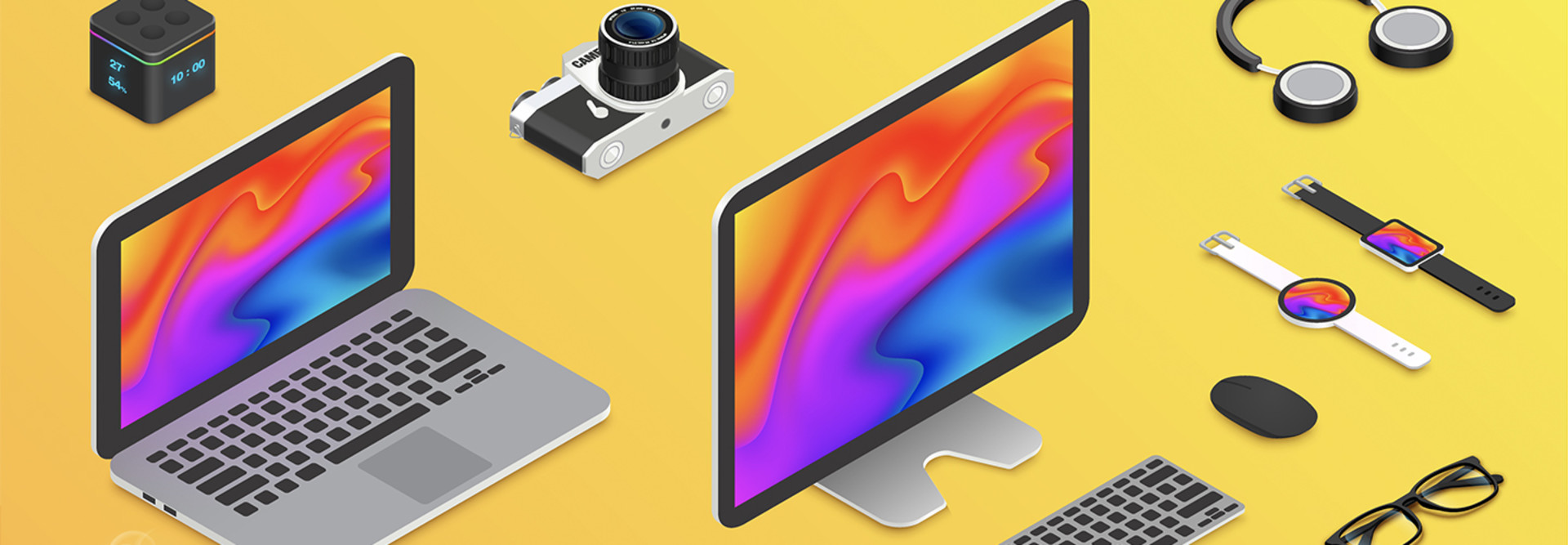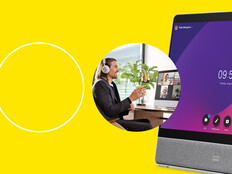What Are the Benefits of Using KVM Switches?
KVM switches allow users to shift seamlessly between devices. Here are some of the benefits IT leaders should know:
- Consolidation: With KVM switches, there’s no need for multiple keyboards, monitors and mice to clutter your workspace. You can consolidate hardware and save desk space.
- Increased efficiency: By controlling multiple devices with a single set of input devices, KVM switches help save time, create efficiency and boost productivity.
- Cost-Effectiveness: By removing the need for multiple keyboards, monitors and mice, KVM switches reduce a user’s average spending on input devices — a cost that can add up.
- Security: Since users can control multiple computers without needing to physically move between them, KVM switches reduce the risks of unauthorized access to sensitive information.
- IT management: KVM switches make it easier for IT professionals to manage multiple computers from a single console, empowering them to troubleshoot issues faster.
In these ways, whether used in an office or server room environment, KVM switches can dramatically improve a business’ workflow.
LEARN MORE: How KVM devices can transform your enterprise.
What Applications Are KVM Switches Used for?
Whether it’s a multimonitor KVM switch or another type, KVM switches can have applications across industries. Multimonitor KVM switches are used in video editing and financial workspaces. Secure KVM switches can help in government and military agencies. And over-IP KVM switches can be useful for control rooms and remote server management.
Each KVM switch model also has its own capabilities. For instance, dual-monitor KVM switches offer setups that connect the computer and both monitors via the HDMI ports with a single keyboard and mouse pair. (A four-port KVM switch connects with two or more computers but only one monitor, one keyboard and one mouse.)
Users also can select desktop monitors such as the ViewSonic ColorPro VP3481a LED monitor, sold with a built-in KVM switch. This allows users to switch between different computer inputs, controls and keyboard hotkeys to quickly access different PCs.
What Is KVM Over IP, and What Is It Used For?
KVM over IP switches, such as the Lantronix Spider KVM, are hardware devices that allow users to remotely access and control multiple computers or servers over an IP network. With these remote KVM switches, it doesn’t matter if a user is in the heart of a server room or on the other side of the world; all a user needs is an internet connection and they can control practically every aspect of the devices connected to the switch.
The ability to remotely access up to thousands of servers is a major asset for growing enterprise networks. It’s especially useful in data centers and server rooms: With KVM over IP switches, IT professionals can also manage multiple servers and computers with greater efficiency since they save the travel time of going to each location. Across industries, KVM over IP switches can also be useful for non-IT users who need to control multiple devices remotely.
EXPLORE: CDW's digital workspace solutions to support teams wherever they work.
Tips for Organizing and Managing KVM Switches
Once you deploy a KVM switch, it’s important to make sure it’s fully optimized within your workspace. Here are some tips and tactics to keep in mind:
- Choose the right KVM switch to fit your needs: There’s a vast array of KVM switches on the market, and no two are the same. When deciding which switch to obtain, it’s important to know your needs (such as the type of operating systems you need supported) and make the final decision accordingly. Maybe a desktop monitor with a built-in KVM switch will be more beneficial than an external KVM switch.
- Use the right input devices: Double check that all your input devices are compatible with every device you want to connect with KVM switches. Different computers use different operating systems, and not every keyboard, monitor and mouse will work.
- Select the right cables: Consider which specific cables are compatible with the work you want to accomplish. The wrong cables could cause issues with video quality or prevent the switches from working properly altogether.
- Label your cables and ports: To avoid confusion when switching between computers, label the cables and ports on your KVM switches. This makes it easier to identify which computer is connected to which port and which cable belongs to each computer.
- Keep your KVM switches clean: Any accumulation of dust and debris can cause KVM switches to malfunction. Keeping your switches clean with a soft, dry cloth is a simple way to keep them running well in the long run.
- Test your KVM switches on a regular basis: Use a KVM switch to switch between computers and check for any issues to prevent glitches. Practicing this prevention tactic is a good way to avoid any unexpected technical difficulties.
- Secure your KVM switches: Store your KVM switches in a secure location and password-protect them. This is critical to preventing unauthorized access to all your devices.
KVM switches may not be right for everyone. But if you or your coworkers already are using multiple devices in your digital workspace, these tips can help you realize the full benefits of these small but powerful hardware devices. A quick consultation with a strategic adviser such as CDW can also help you determine the right switch for your needs.











